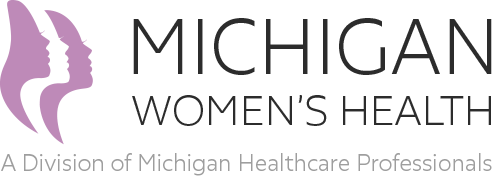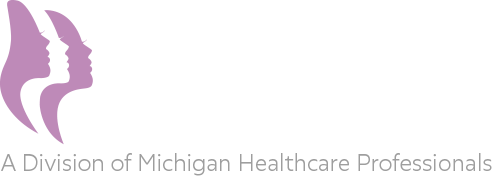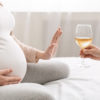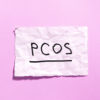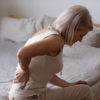Osteoporosis can be a serious health issue for postmenopausal women by predisposing them to fractures. Between ages 50 and 59, nearly 7% of women have osteoporosis. By age 80, nearly 35% of women have osteoporosis. This translates to 2 million fractures a year due to osteoporosis. Once a hip fracture has occurred, it can lead to long term issues including limited mobility, need for longterm care and increased risk of death within a year from fracture. Fractures of the spine can lead to substantial pain, loss of height and decreased mobility.
It is important to understand the disease as well as prevention and treatment options. So let’s get started:
What is osteoporosis?
Osteoporesis is a bone loss that particularly affects postmenopausal women, however bone loss is greatest as women transition through menopause and in early menopause. Bone loss, as opposed to arthritis (inflammation of the joints which causes pain), is painless. This bone loss can cause serious fractures of the spine and hip over time.
Bone is constantly remodeling – old bone is removed while being replaced by new bone. Bone strength is based mainly on bone mineral density (BMD). As long as bone rebuilding is equal to bone break down, as in premenopausal woman, the bone density remains stable. However, in perimenopause, as estrogen decreases, bone break down out paces bone rebuilding. This process can be accelerated with life style (for example, less activity increases bone loss) and certain medications.
How is osteoporesis diagnosed?
Bone mineral density is measured by a DEXA scan (dual-energy X-ray absorpiometry). The main measurement we look at is the T-score which compares a woman’s bone density to the average value of a healthy young woman. So a T-score of 0 to -1.0 is considered normaland a T-score of -2.5 or lower is considered osteoporesis. BMD in between normal and osteoporosis is designated as osteopenia, or low bone mass, which does not necessarily mean that bone loss has occurred.
When should I be tested for osteoporesis?
The current recommendations are as follows:
- Those with a history of fracture since menopause
- Those with known medical causes of bone loss or fracture
- Those aged 65 years and older
- Those aged 50 years and older with one or more of these additional risk factors:
- Body weight less than 127 lb, BMI less than 21
- History of hip fracture in a parent
- Current smoker
- Discontinuing estrogen with additional risk factors for fracture
What puts me at risk for osteoporosis?
- Advancing age – as you age, your bone density decreases
- Thinness
- Genetics – if it runs in your family
- Smoking
- Low Vitamin D
- Health issues such as rheumatoid arthritis (chronic inflammation), diseases that cause malabsorption (like celiac disease), overactive thyroid, following gastric bypass surgery
- Certain medications such as longterm steroid use, certain antiseizure medications
What can I do to help prevent osteoporosis?
Just like with your general health, eating a balanced diet with adequate calcium (1,000 – 1,200mg/day) and Vitamin D (400 IU/day), being physically active, avoiding harmful habits like smoking, and increasing your agility to prevent falls will also help your bone health. However, these approaches will not prevent bone loss in early menopause, will not significanly increase bone mass in postmenopause, and are not adequate to reverse osteoporosis.
Medications available to treat osteoporosis
All osteoporosis drugs work by modulating bone metabolism either by decreasing bone break down or increasing bone formation. Most medications available currently help by decreasing bone break down and either maintain or improve bone density.
- Hormone replacement therapy (HRT) – overall has been shown to decrease risk of fracture by approximately 30%. HRT has been shown to be a preventative option, however it has not been studied specifically for treatment of osteoporesis.
- Raloxifene (Evista) – an option for both prevention and treatment of osteoporesis, raloxifene is in the family of medication called selective estrogen receptor modulators (SERMS). Raloxifene has been shown to increase bone density by an average of 1.5% and decrease fracture risk by 30-50% over 3 years of use (only in the spine).
- Bisphosphonates – This family of medications is an option for prevention and treatment. It has been shown to increase bone density by 4-6 % after 2 years of use and decrease risk of fracture in up to 50-70% over 3 years of use (in both spine and hip). Options include oral and injectable.
- Prolia – This is specifically for treatment of osteoporesis and is an injection given every 6 months. It has been shown to reduce fracture risk by 40-70%.
What treatment is best for me?
Since osteoporesis is a chronic, progressive and incurable disease, it requires life-long management, just like chronic diseases such as high blood pressure or diabetes. For this reason, treatment has to be individualized, monitored and adjusted depending on how you are doing and what is happening with your BMD. This means different medications may be chosen at different times in your life to maximize benefits while keeping risks and side effects minimal. For example, this may mean your initial therapy is a bisphosphonate for 3 to 5 years and if bone density improves, then switching to something like raloxifene to maintain that bone density.
Bottom line, it is important to monitor your bone density, optimize your bone health, especially prior to menopause, and discuss with your doctor what prevention or treatment would be best for you.
